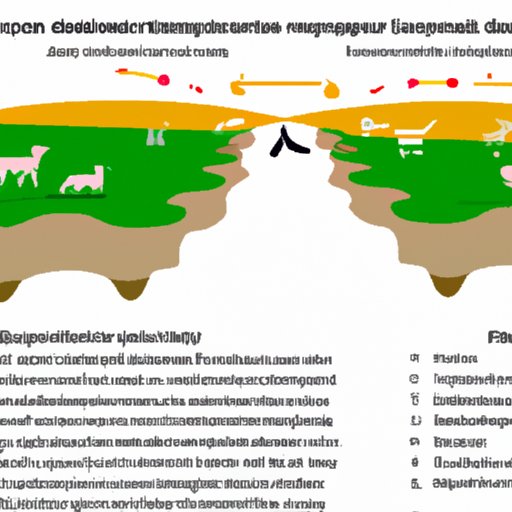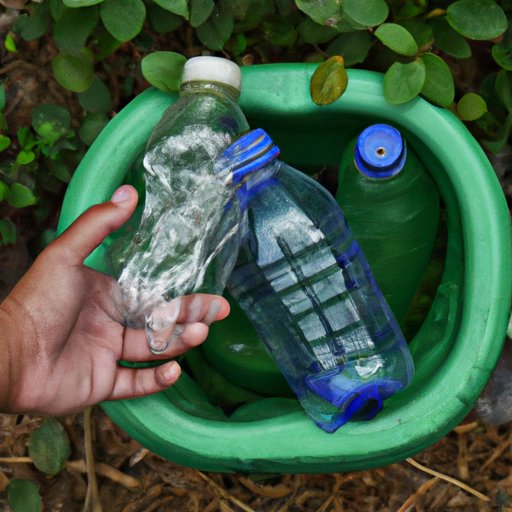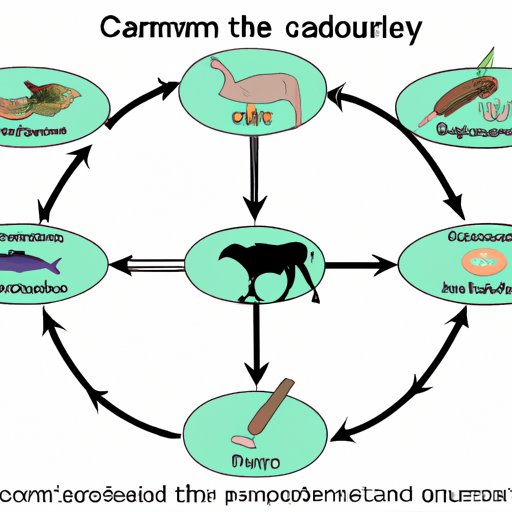Introduction
Secondary consumers are organisms that feed on primary consumers within a food chain or food web. They occupy a unique position in the food chain and play an important role in the balance of nature. In this article, we will explore the definition of secondary consumers, provide examples, and discuss their role in the food chain and the environment.
Exploring Secondary Consumers: A Guide to Understanding These Important Organisms
What are Secondary Consumers?
Secondary consumers are organisms that feed on primary consumers. Primary consumers are usually herbivores that feed on plants, while secondary consumers feed on these herbivores. The term “secondary consumer” is often used interchangeably with “carnivore,” but it can also refer to omnivores, which feed on both plant and animal matter. In some cases, tertiary consumers may also be referred to as secondary consumers. Tertiary consumers are top predators that feed on other carnivores.
Examples of Secondary Consumers
There are many different types of secondary consumers. Some examples include wolves, hawks, snakes, and foxes. Other animals such as bears, dolphins, and sea lions are considered omnivorous secondary consumers since they feed on both plants and animals.
Characteristics of Secondary Consumers
Secondary consumers tend to be larger and more powerful than primary consumers. This allows them to hunt and capture their prey more efficiently. They also have a higher metabolic rate than primary consumers, allowing them to process the energy they consume more quickly. Finally, secondary consumers tend to have a wide range of dietary options, which gives them a greater ability to adapt to changes in the environment.

The Role of Secondary Consumers in the Food Chain
How Secondary Consumers Fit Into the Food Web
Secondary consumers are an important part of the food chain. They feed on primary consumers and transfer energy from one level of the food chain to the next. Without secondary consumers, the energy contained in the primary consumer level would not be transferred to the top level of the food chain. This could lead to an imbalance in the food web, resulting in fewer top predators and a decrease in biodiversity.
Impact of Secondary Consumers on the Ecosystem
Secondary consumers also have a significant impact on the environment. By feeding on primary consumers, they help to keep populations of these species in check. This helps to ensure that resources are not overused and that habitats remain healthy and balanced. Additionally, secondary consumers can help to control invasive species by preying on them and keeping their numbers in check.

How Secondary Consumers Impact Ecosystems
How Secondary Consumers Control Population Sizes
Secondary consumers play an important role in controlling population sizes of primary consumers. When they feed on primary consumers, they reduce the number of individuals in the population, which can prevent the population from growing too large. This helps to maintain a balance between predator and prey populations, which is essential for the health of the ecosystem.
Effects of Secondary Consumers on the Balance of Nature
In addition to controlling population sizes, secondary consumers also have a significant effect on the balance of nature. Studies have shown that when secondary consumers are removed from an ecosystem, there is a decrease in biodiversity, as well as an increase in the number of primary consumers. This can lead to an overall decrease in the health of the habitat.

The Benefits of Secondary Consumers in Nature
Improving Habitat Quality and Biodiversity
The presence of secondary consumers can also have a positive effect on the environment. By controlling population sizes and maintaining a balance between predator and prey, they help to improve the quality of habitats and promote biodiversity. This improves the health of the ecosystem, as well as its ability to support a variety of species.
Enhancing Carbon Storage and Cycling
Secondary consumers also play an important role in carbon storage and cycling. Studies have shown that when secondary consumers are present in an ecosystem, they help to store more carbon in the soil. This helps to reduce the amount of atmospheric carbon dioxide, which is essential for mitigating climate change.
An Overview of Secondary Consumers and Their Role in the Environment
Summary of Secondary Consumers
Secondary consumers are organisms that feed on primary consumers in a food chain. Examples of secondary consumers include wolves, hawks, snakes, and foxes. They have a significant impact on the environment and play an important role in maintaining the balance of nature. They help to control population sizes of primary consumers, promote biodiversity, and enhance carbon storage and cycling.
Conclusion
Secondary consumers are essential for maintaining the balance of nature and promoting a healthy environment. They play an important role in the food chain and have a significant impact on the health of the ecosystem. By understanding their role and importance, we can better appreciate their contribution to the environment and learn how to protect them.
(Note: Is this article not meeting your expectations? Do you have knowledge or insights to share? Unlock new opportunities and expand your reach by joining our authors team. Click Registration to join us and share your expertise with our readers.)
